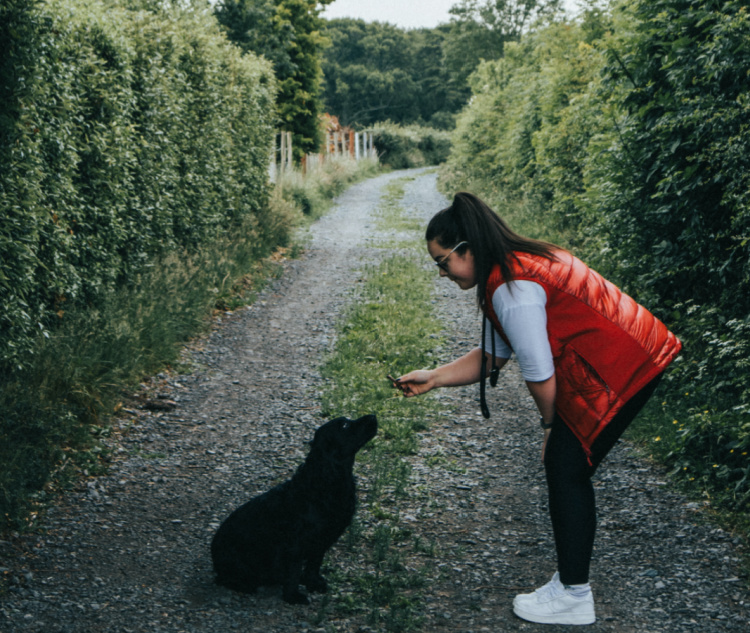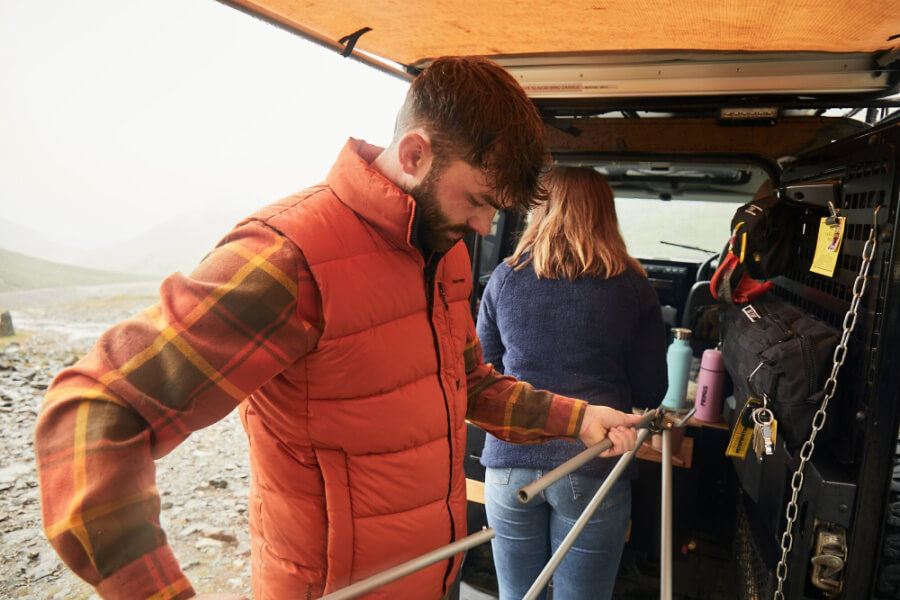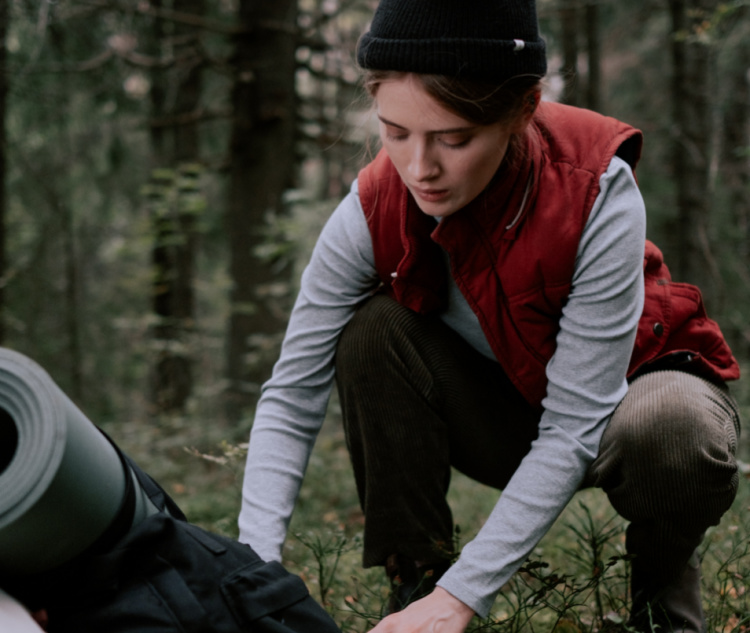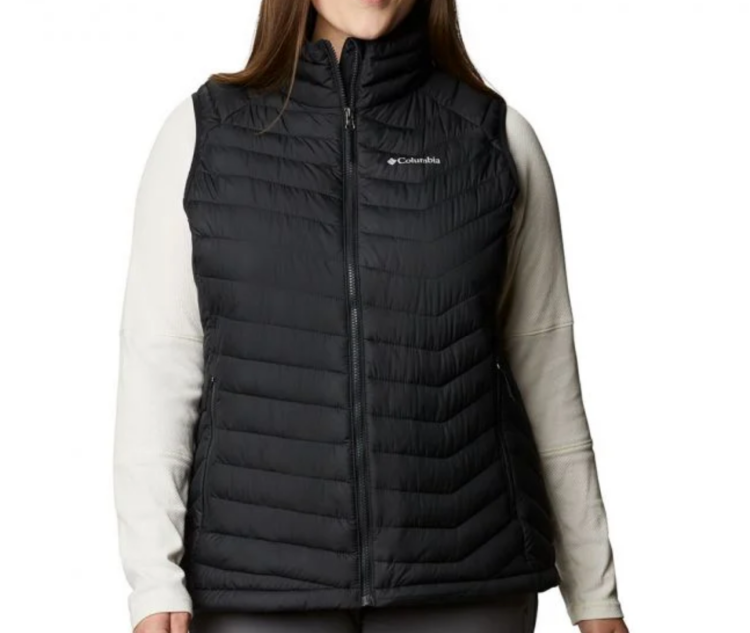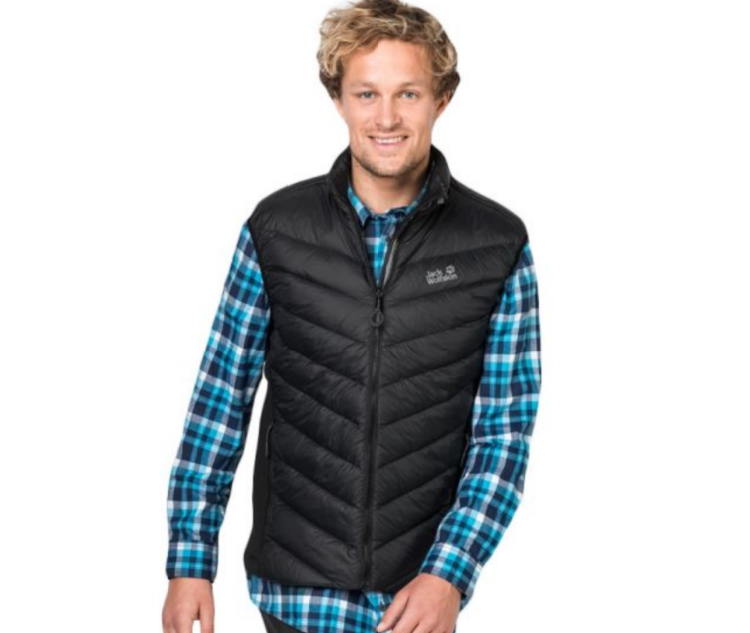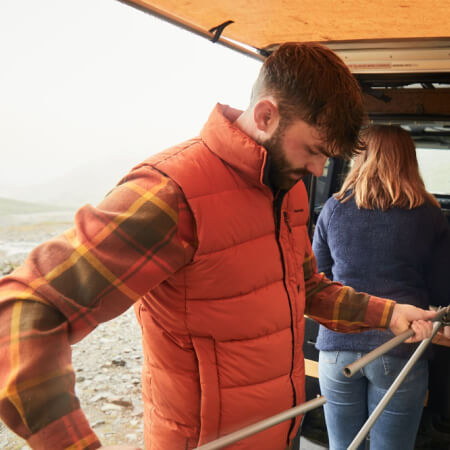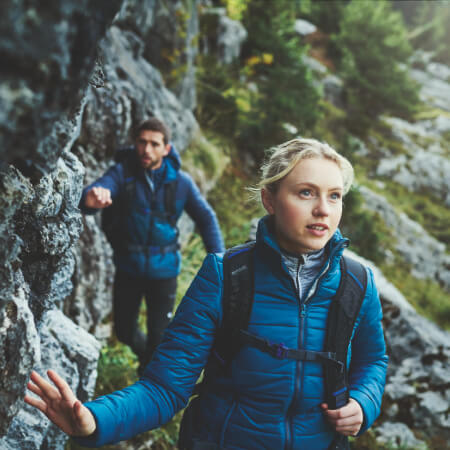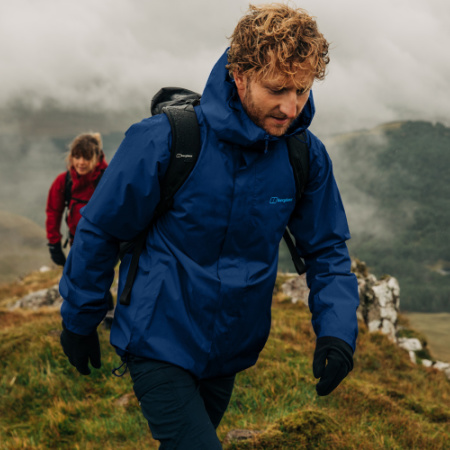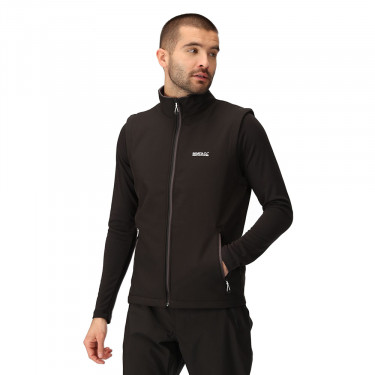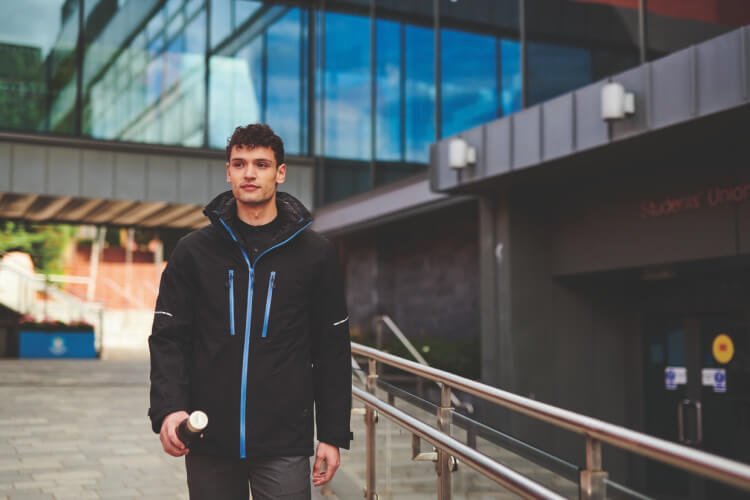When it comes to looking for and buying a gilet, it should be a snug fit, to trap air on your chest to keep it warm – the main function of a gilet.
A gilet is an added layer to keep you warm, so you don’t want it to be too loose that a draft gets through at the hem. On the other hand, you don’t want it too tight because it will add bulk and prevent any potential moisture wicking away from your body.
For the shoulder and armholes, you don’t want the gilet to overlap or overhang your shoulders. Any easy guide is to look at the hem or stitch line on your top where the sleeve joins the body – you don’t want the gilet to go beyond this point. You also don’t want to feel restricted.
Finally, the gilet shouldn’t be too long – no longer than a top. As these are often worn in a layering system, it shouldn’t be longer than an outer layer, popping out of the bottom of the hem, for example.




